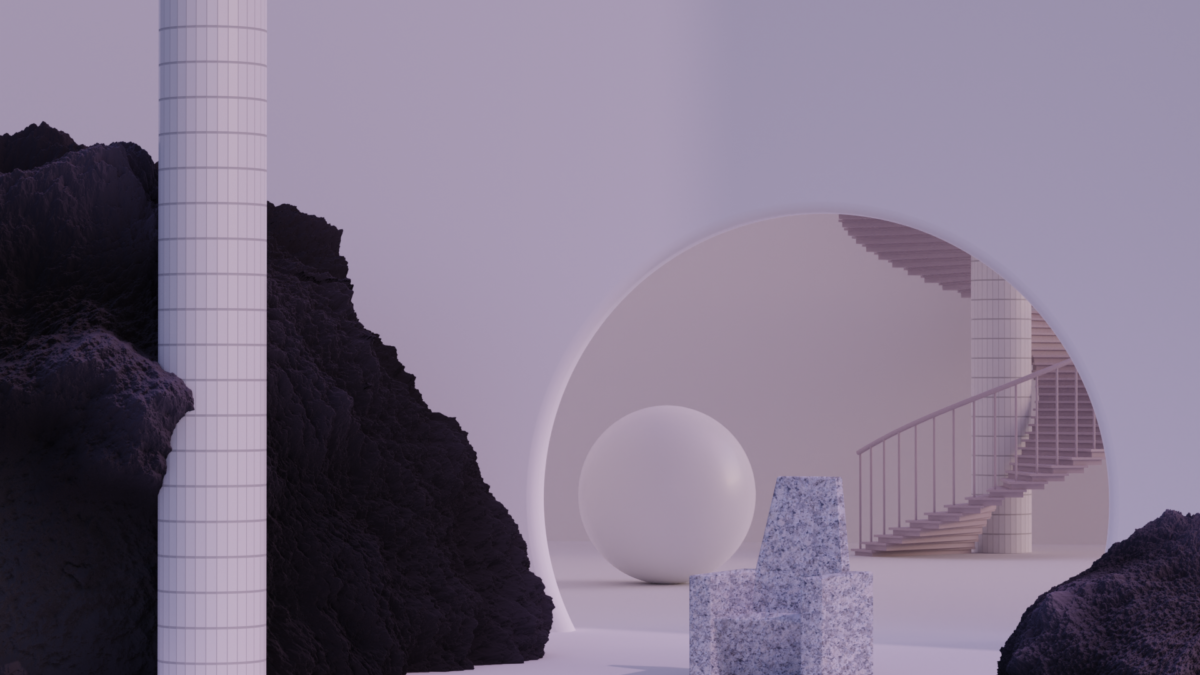Peter Favinger. When I think of Peter I think of great smile and imaginative places of great impact and refinement.
I met Peter Favinger a couple of years ago at a Marc Thorpe opening in Chelsea. Peter’s irony and genuineness were as surprising as his cultural background. From the history of art and architecture to Japanese culture.
Peter is a concentrate of positivity and a keen observer, a sharp dreamer. He was born in Columbia, Maryland and already as a child has clear ideas: he wants to become an artist.
Twenty years old, Peter Favinger moved to New York where he worked in Jeff Koons‘ studio. Not an opportunity for everyone to grow up in a factory of ideas of this magnitude.
It is in 2017 that Peter discovers 3D, and later realizes that he wants to be the artist he dreamed of as a child, but an artist of the third dimension. A dimension that knows how to approach his idea of dream and give it shape.
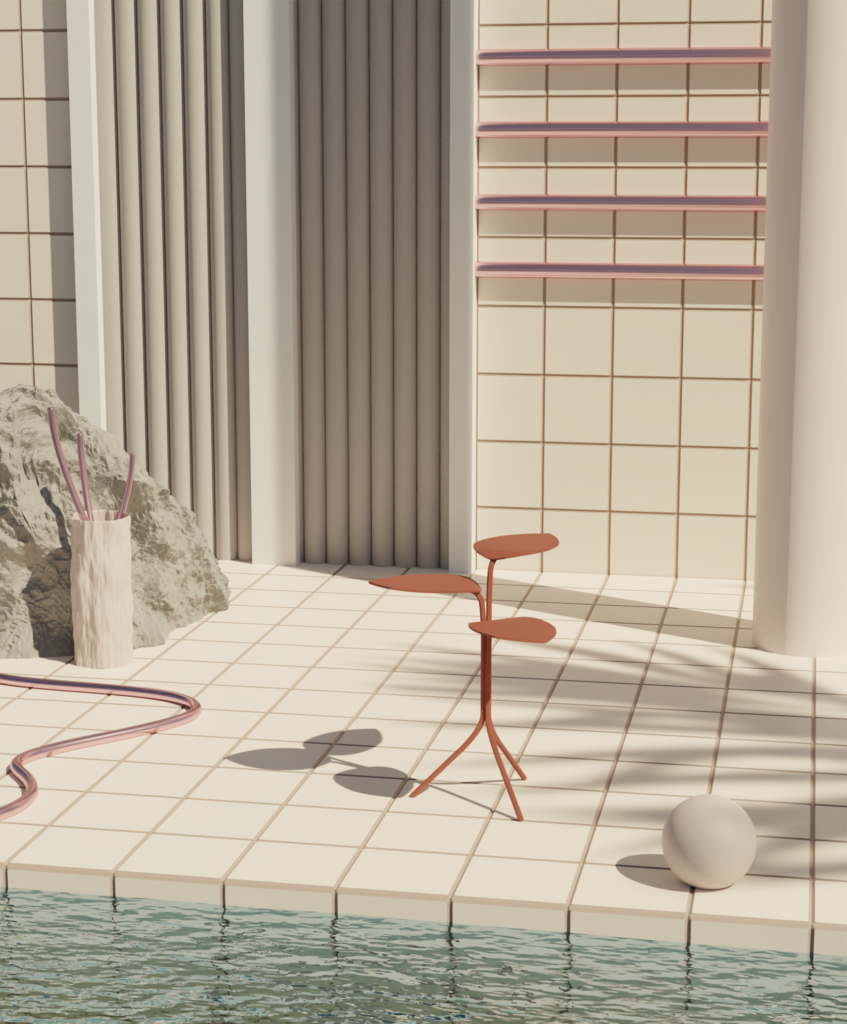
Peter, tell us about yourself. What did you imagine growing up when you were a child? What was your favorite trip? And the episode that made you dream the most?
Hi! I grew up in Columbia, Maryland, not far from Washington D.C. When I was 8 years old I had told my parents that I wanted to be an artist when I grew up, and that mindset has never really changed after almost 20 years.
My favorite trip was Tokyo and Kyoto Japan in 2016, I had such a great time seeing a country I wanted to visit for so long! The food and the views were incredible.
You graduated in fine art. You work from 2015 to 2018 in Koons’ studio. How did you get to 3D and how much your journey has contributed to your personal vision of the digitally created dimension?
I got introduced to 3D modeling in 2017 by one of my managers at Jeff Koons actually. As soon as I started learning Blender I felt this wave of excitement of learning something completely new.
3D was never something I thought I would get interested in – I was a traditional painter and drawing artist up until I was introduced to 3D modeling, and I gravitated to the medium immediately.
It’s changed my views somewhat.
As I said before, I always knew I wanted to be an artist, but now with 3D I want to pursue the digital art world.
What does it mean to create in 3D?
To create in 3D is incredible because there’s so much forgiveness in the practice: if there is something you don’t like that you added to the environment or composition, you can just remove it with a few clicks, you don’t have to wait for paint to dry to paint over it or scrape off or even start over completely.
You become a world builder, and can freely move around your 3D work.
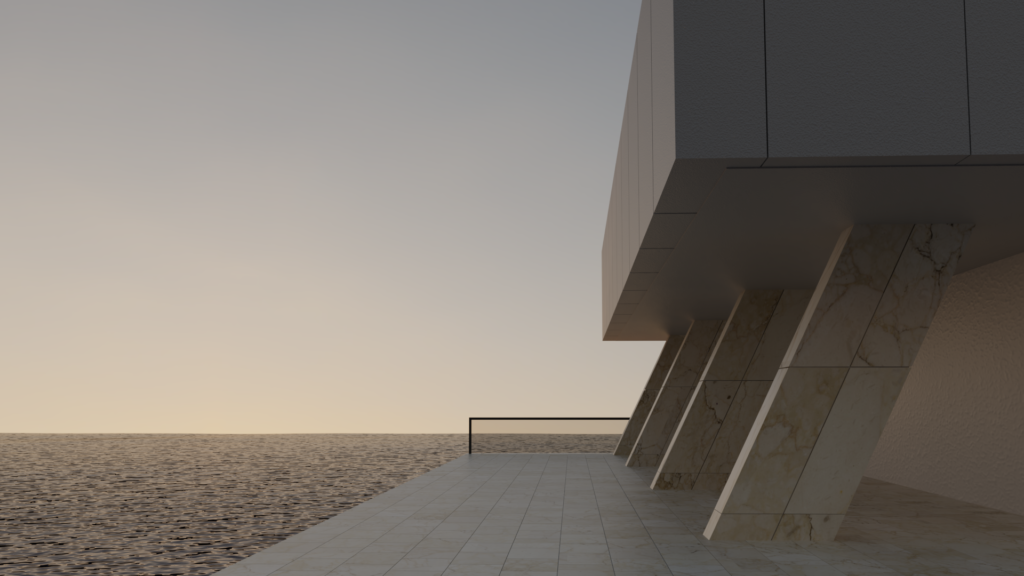
What are the difficulties and pleasures of being a multidisciplinary artist? What is your degree of freedom while creating your works? What does it mean to create in 3D?
I think the difficulties and pleasures of being a multidisciplinary artist are one in the same.
You create the problem and also come up with the solution, and that’s where you utilize your knowledge from multiple skill sets in order to reach the final result.
And that ties in to the degree of freedom when I create my artwork as well.
My imagination is as endless as I believe it to be, but the limitations come in when there isn’t something I know how to create digitally, so I scour the internet trying to find the answer to my problem or I just mess around in 3D software to find what I like.
Do you have references that have shaped your artistic and architectural culture?
This is such a tough question because over the past year and a half I’ve gotten to interact with so many incredible digital artists and designers that I would feel bad if I omitted anyone in particular!
Great individuals like FilmDecay, Mascaraque, Rebecca Lee, Paul Milinski, Nareg Taimoorian, Carlos Neda, Cristina La Porta, Gonzalo Miranda, Nate Garner, Fractal5D, Charlotte Taylor, Soft Geometry, Argot Studio.
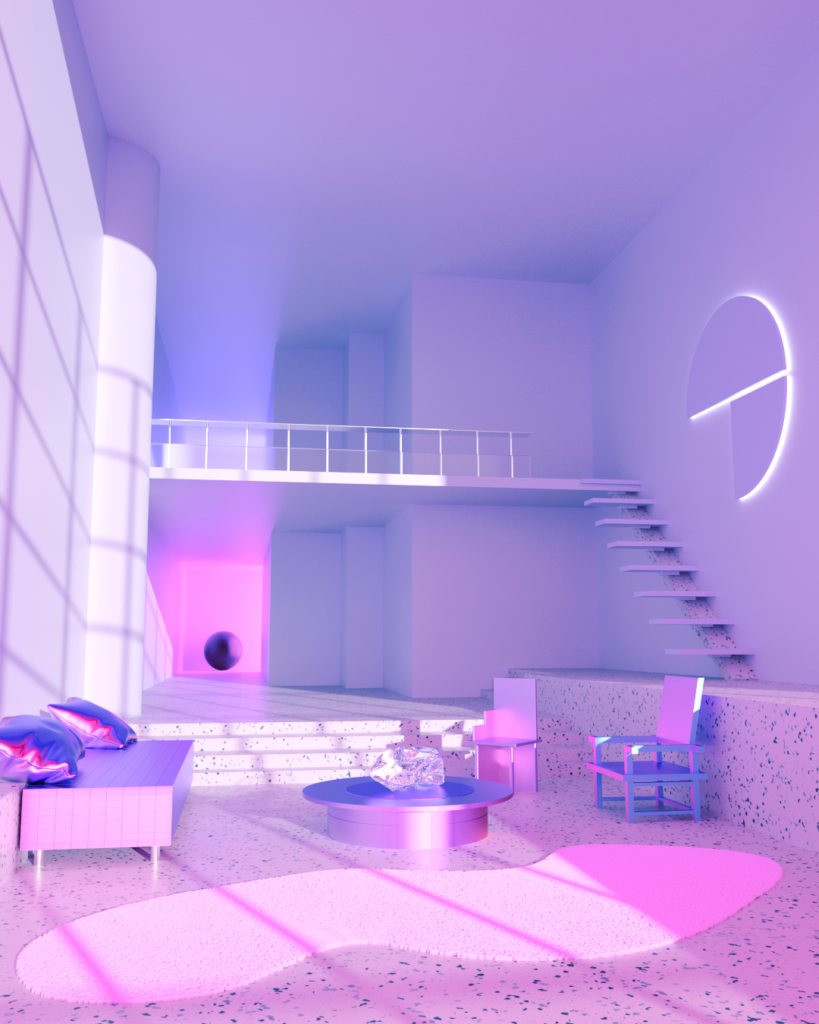
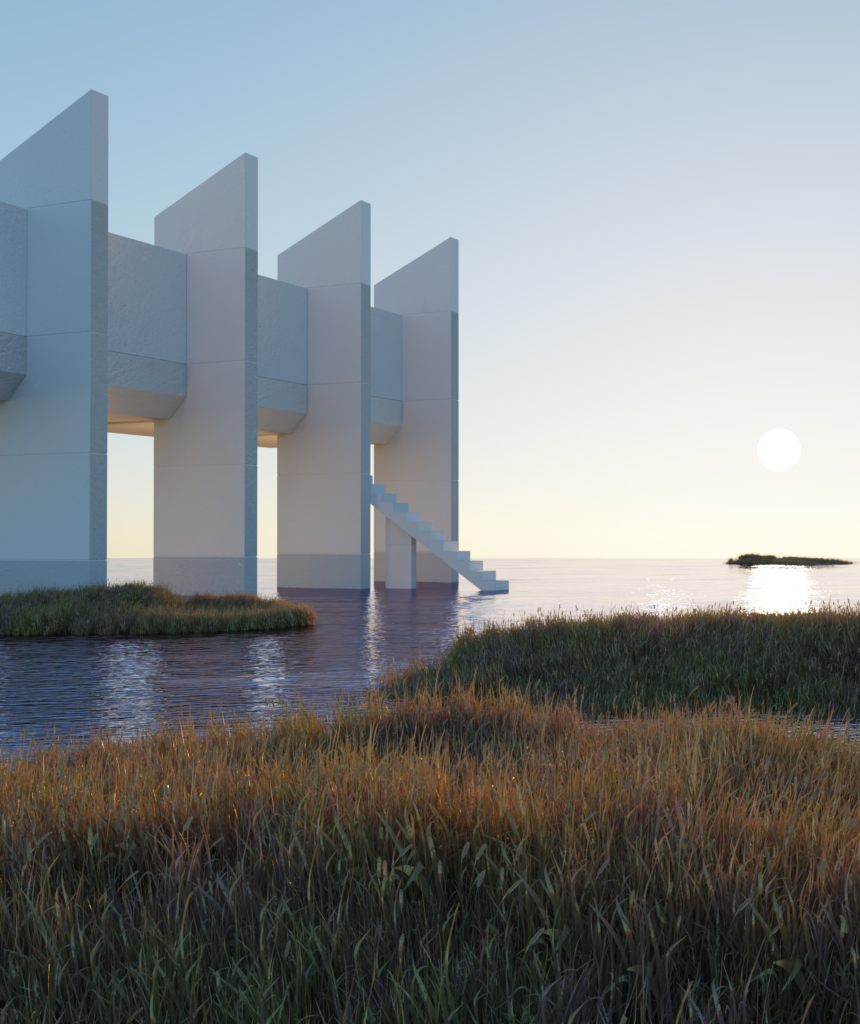
(Apologies to any acquaintances I may have forgotten! Please check out who I follow on my Instagram to see other incredible artists as well!).
READ ALSO – GIUSY AMOROSO 3D ARTIST
All of these artists are helping define this digital age of surrealist and imaginative dreamlike architecture and I’m always just blown away at what amazing things everyone is creating.
I’m also inspired by the modernist architectural movement of glass and concrete and steel coming together in unique ways, as well as the Brutalist architectural movement too!
With a lot of my earlier work, the music and atmosphere of the 80s really influenced how I created my environments.
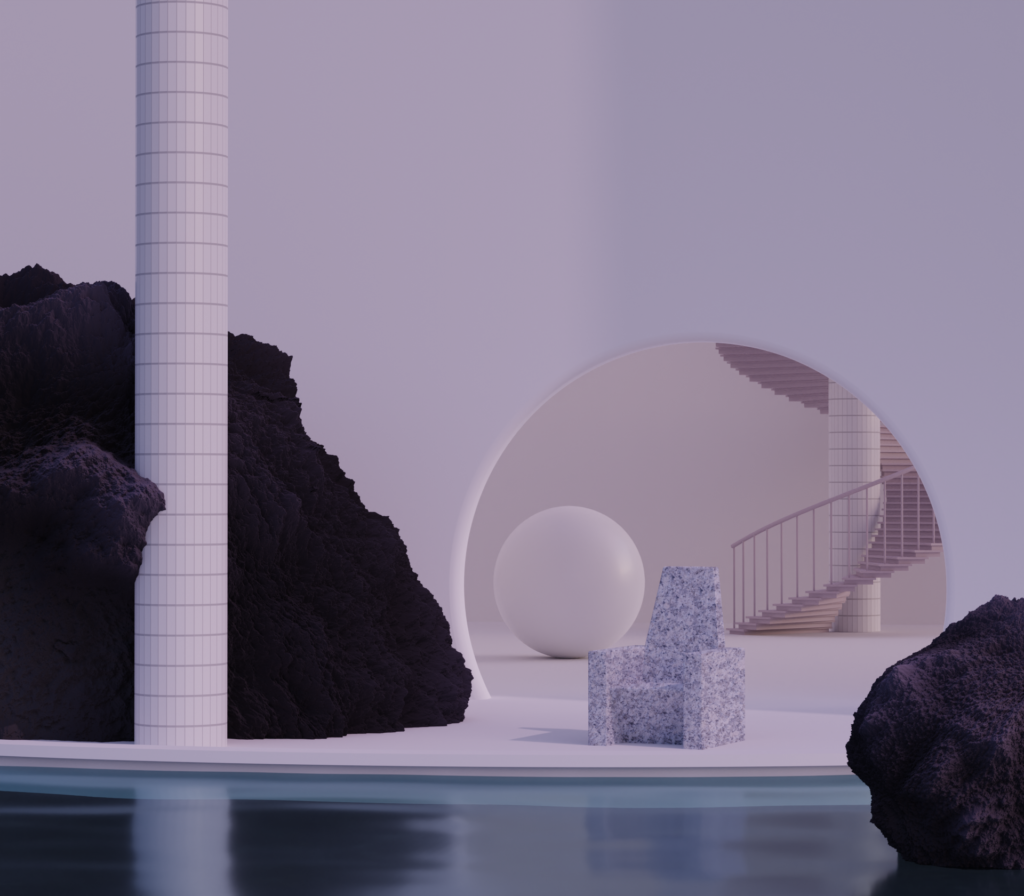
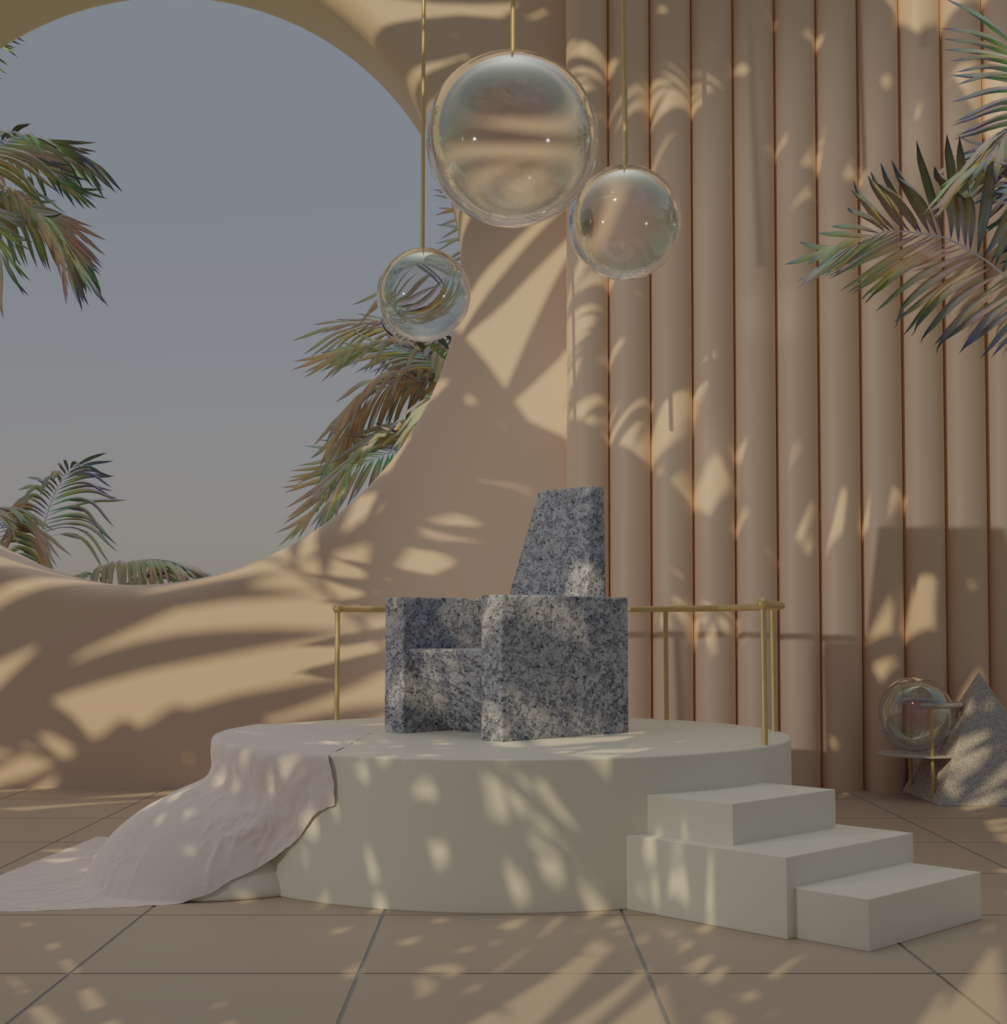
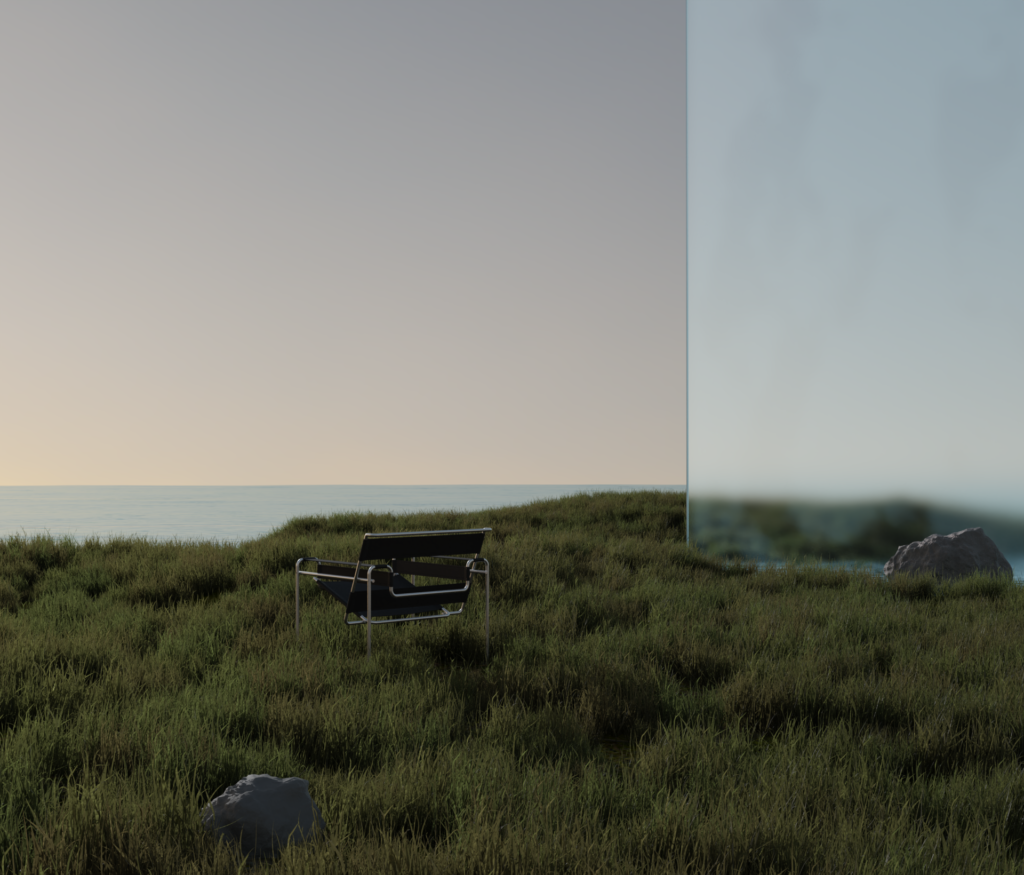
I was trying to create digital spaces where I would imagine myself listening to 80s style music to try and have some sort of fake nostalgia.
But as my work is developing I’m currently interested in this still surreal like spaces, but trying to ground them with influences of modernist and brutalist architecture from the 60s to 90s in East and West Europe particularly.
How much does your passion for Japanese culture influence your three-dimensional compositions?
Japanese culture influenced a lot of my early work because the environments that I were creating were in direct response to the type of music that I listened to, and these spaces were where I would envision myself listening to this certain music.
I listen to a lot of Japanese classic pop from the 80s as well as modern day Japanese pop and electronic music. I’m pretty sociable, but there’s this feeling I get from hearing the synthetic sounds, blips, and auto-tuned voices from J-Pop and J-Electronic music.
To me, if the internet were to have a style of music it produced on its own, those sounds would be it. And this feeling makes me feel more comfortable within the digital world, and these digital spaces I create.
I stare at the computer screen so much I should just be apart of the internet honestly
In your site we can discover animations, conceptual creations, an immersive catalog of interior and exterior design. Then, we find Dreamscapes. How was this session born?
I was creating all of these digital spaces and didn’t necessarily have an idea as to what name I could use to tie them together cohesively until I was approached by Gestalten, the international publishing company that focuses on design, architecture, visual culture, etc.
They published a book earlier this year called “Dreamscapes” which highlights this digital world building by digital artist from around the world who create these “utopias”.
I was fortunate enough to be included in the publication, and I thought the title of the book would be an appropriate identifier for this body work I’ve been producing.
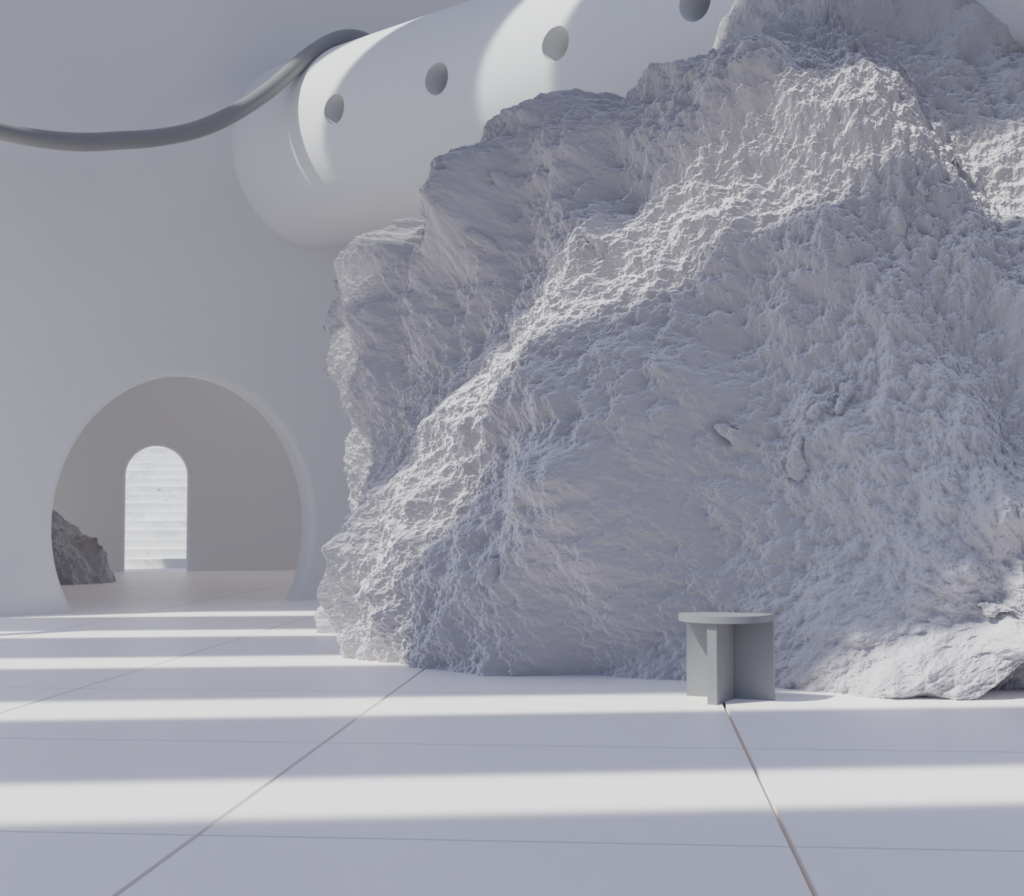
What does the dream mean to you?
The dream to me is a state of being, a feeling to be chased.
You can visualize in your head, and maybe it can become a reality one day. The dream of success by your own standards. The dream of happiness. That’s what “dream” means to me.
Tell us about the collaboration that excited you the most.
I’ve been very excited and thrilled with all the collaborations I’ve had the fortunate opportunity to create with such artists like Rebecca Lee, Fractal5D, Luke Moellman.
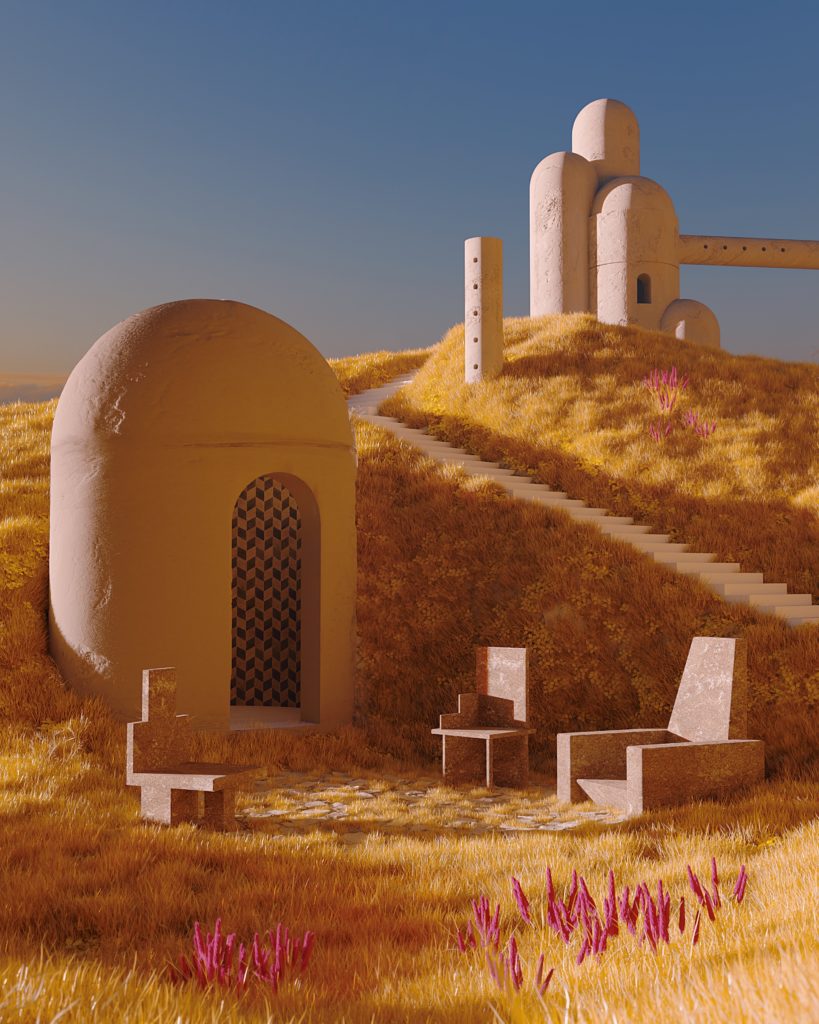
But I think the one that I was the most excited about was the collaboration that started it all with Nate Garner. Nate is an incredible artist with such a keen eye for lighting, and we came up with a set of rules
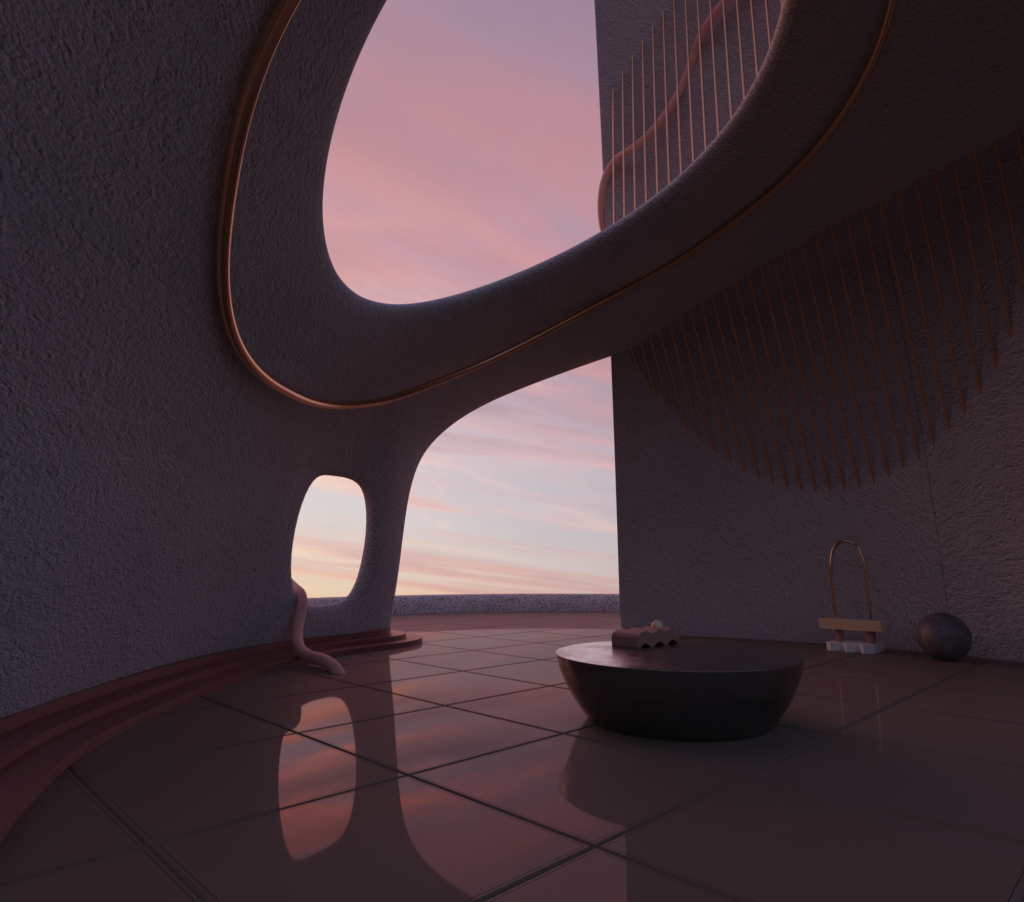
What would you like to dream about tomorrow?
What I’d like to dream about tomorrow…For me it’s still that chase of success by my own metrics. I need to keep pushing myself as a digital artist.
It’s important to take a moment and recognize the accomplishments you’ve made up to this point, but I can’t stay there for long.

